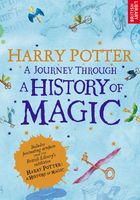
An Apothecary's Sign
‘... it is a monstrous thing, to slay a unicorn,’ said Firenze. ‘Only one who has nothing to lose, and everything to gain, would commit such a crime. The blood of a unicorn will keep you alive, even if you are an inch from death, but at a terrible price.’
FIRENZE -HARRY POTTER AND THE PHILOSOPHER'S STONE
DID YOU KNOW?
Up until recently scientists weren’t sure why narwhals have these tusks. However, new research suggests that the tusks are sensory organs, which pick up changes in the whale's environment, alerting them to food and other whales.

A pharmacy sign in the shape of a unicorn's head (18th century)
SCIENCE MUSEUMA
THROUGHT HISTORY, the blood, hair and horns of unicorns were thought to possess powerful medicinal properties. People would pay huge sums of money for these rare and precious artefacts. The 18th-century sign from an apothecary's shop (on the previous page) uses the prized image of a unicorn. Images and pictures were frequently used to identify shops, as a large portion of the population would have been illiterate at the time.
Carved in oak with a real ivory horn, the sign symbolised to customers that this apothecary was able to provide rare and exotic cures. Of course, it wasn’t actually a real unicorn horn at all (that would be impossible!), but was in fact made from the tusk of a narwhal. Known as the ‘unicorns of the sea’, narwhals were hunted for their valuable tusks which were frequently sold as unicorn horns because of their similarity in look and texture.
FACT
WHAT IS AN APOTHECARY?
An apothecary is a term used throughout history to describe someone who prepared and sold medicine. The study of herbal and chemical ingredients led the way to modern sciences, and today we refer to people in this line of work as pharmacists or chemists.